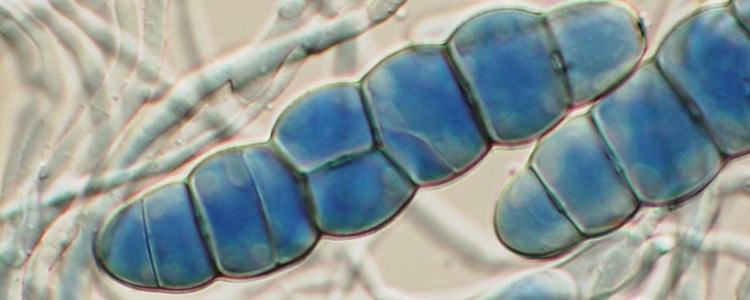100 years of Mycology at CABI: providing resources to underpin research
Thursday 6 February
CAB International began its work in mycology with the establishment of the Imperial Bureau of Mycology in 1920. The bureau’s remit was to accumulate information and identify fungi for the British Empire overseas. It very soon became renowned for accumulating, editing and validating information; a key publication being the Review of Applied Mycology. Other key publications were the Index of Fungi, first published in 1940, the Distribution Maps of Plant Diseases in 1942, the Bibliography of Systematic Mycology in 1947 and these were followed in 1964 by the Descriptions of Pathogenic Fungi and Bacteria; all of these are ongoing publications which provide an essential resource for mycologists and plant pathologists worldwide. The first edition of the authoritative Dictionary of Fungi was published in 1943 and has been revised periodically since: the most recent (tenth) edition being released in 2008.
The use and provision of fungal cultures at the Bureau was envisaged by Butler (1921), isolates collected by the scientists formed the nucleus of the CABI living culture collection. The collection began as a series of mycologist laboratory collections which was coordinated in 1935 by Major Dade but it was in 1947 when it became the National Collection of Fungus Cultures. The fungal component of 760 cultures (i.e. the full fungal collection minus medical fungi and yeasts) of the National Collection of Type Cultures then housed at the Lister Institute collections were transferred to CABI (Report, 1947). Dade incorporated these strains into the collection using relevant culturing techniques to maintain them. Onions introduced freeze drying and cryopreservation in the 1960s with Smith undertaking the further development and optimisation of these techniques for filamentous fungi and Ryan extending cryopreservation techniques to Oomycetes. The collection growth reflected the activities of the mycologists of the time and by the 1990s the collection housed over 20,000 strains; it has continued to grow to its present level of 28,000 fungi and 2,000 bacteria. CABI undertook the role of providing this resource not only to underpin UK research but, as part of its commitment to its 49 member countries, made the resource available globally. These organisms have been provided to thousands of scientists as references and to underpin research, currently it is providing strains for the Darwin Tree of Life project with RBG Kew https://www.sanger.ac.uk/science/programmes/tree-of-life to deliver the fungal component in the UK-wide initiative to read the genomes of all 60,000 complex species (eukaryotes) in the British Isles.
The collection has grown to support work in mycology, agriculture and the environment but its role has now expanded beyond axenic single cultures to address the 99% of microorganisms that are yet to be cultured. In the modern era, microbial interventions and solutions require knowledge of not only those microorganisms that can be grown and preserved axenically but whole microbial communities: the microbiome. Technologies of today enable us to access this hidden resource, enabling a better understanding of how to harness and manipulate microbial communities to improve crop yields and facilitate successful interventions such as biocontrol of pests, diseases and invasive species.
References and reading
Aitchison, E.M. & Hawksworth, D.L (1993) IMI: Retrospect and Prospect. Wallingford: CABI, pp 164
Blight D. & Ibbotson, R. (2011) CABI a century of scientific endeavour. Wallingford,UK: CAB International pp171. ISBN: 978-1-84593-873-4
Butler E.J. (1921). The Imperial Bureau of Mycology. Transactions of the British Mycological Society 7, 168-172.
Report (1947). Specialist Conference on Culture Collections of Micro-organisms. (S.O. Code No. 47-139.) London: H.M.S.O.
Ryan, M.J., McCluskey, K., Verkleij, G. & Smith, D. (2019) Fungal Biological Resources to support International development: Challenges and Opportunities. World Journal of Microbiology and Biotechnology (2019) 35:139. https://doi.org/10.1007/s11274-019-2709-7
Further Information
CABI will be offering various paid internships later in 2020, including work in their collection – watch this space in 2020